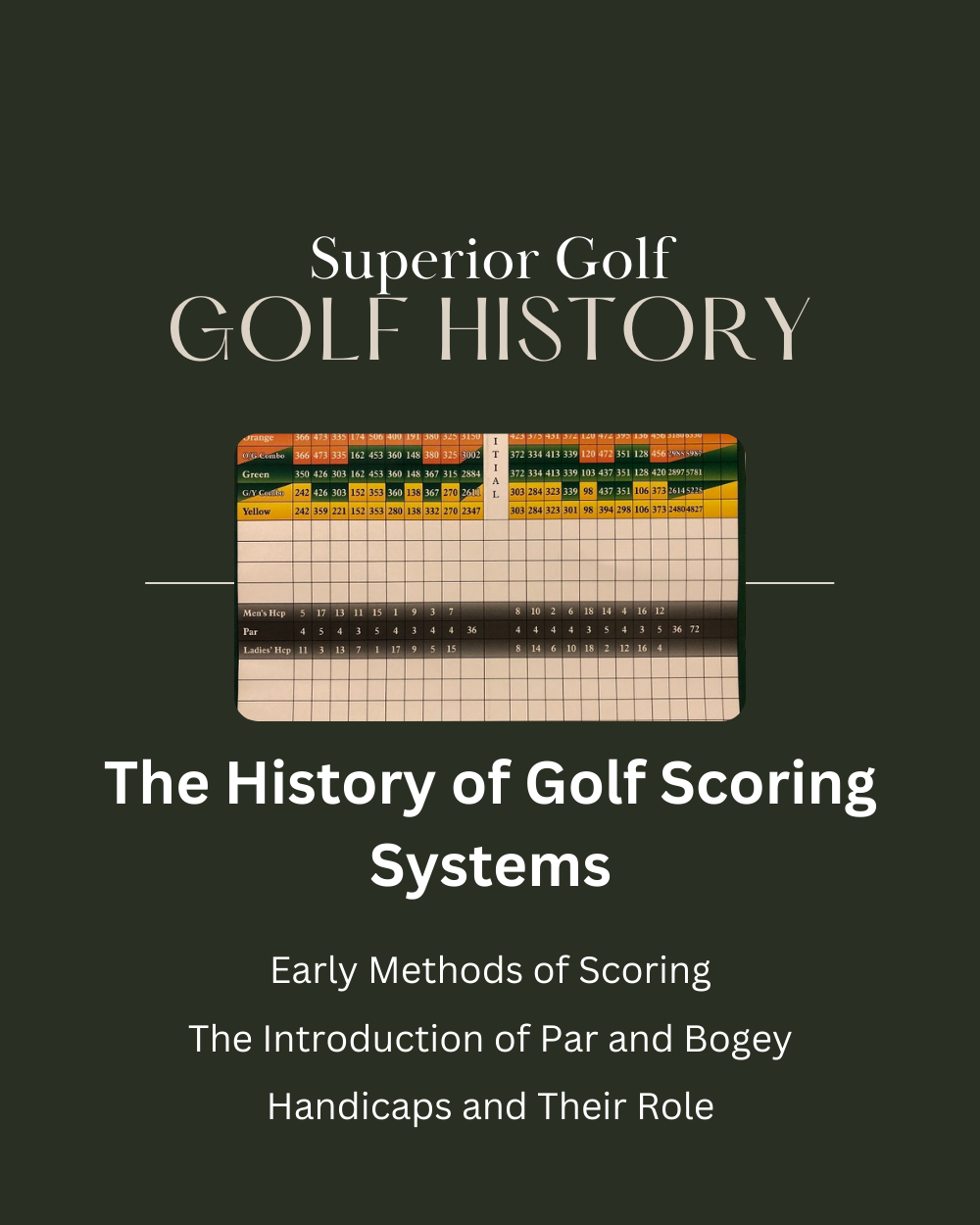The History of Golf Scoring Systems: Golf’s history is fascinating, especially its scoring systems. Since ancient times, counting each stroke was common. This showed how well a player did. The first known formal golf scorekeeping was in 1567 during a Scottish noblemen’s match1. Back then, match play was popular. It meant comparing strokes with your opponent, not just counting them.
In the 1800s, ‘par’ was coined for a perfect round, estimating two putts for each green2. ‘Bogey’ meant one stroke above par, coming from elite players’ average scores2. By the late 1800s, handicaps were introduced to make the game fairer2.
Handicaps became official in the US around 1911, adjusting scores based on skill2. There was also the ‘bisques’ system. It let players use strokes strategically, though it wasn’t officially recognized2. These changes have greatly influenced the game’s fairness and format worldwide.
The History of Golf Scoring Systems Key Takeaways
- Golf scoring systems have been evolving since antiquity, with the first recorded instance in 1567.
- Match play was an early method of scoring, focusing on strokes comparative to the opponent2.
- The term ‘par’ describes a flawless round by a professional, while ‘bogey’ indicates one stroke over par2.
- Handicaps were introduced in the late 1800s, with formal lists established by 1911 in the U.S.2.
- The ‘bisques’ system allowed strategic application of handicap strokes2.
Evolution of Golf Scoring
Long ago, golf scoring systems started with a challenge against a ‘bogey’ standard. This method changed with the weather, making it tough to play on windy days. Golfers used terms like ‘the odd’ and ‘the like’ before counting every stroke was needed.
New rules brought more organized scoring methods. These changes helped create the golf scoring we know today.
Early Methods of Scoring
Golf evolved to have three main scoring types: stroke play, match play, and Stableford1. Stroke play finds the winner by the lowest score over 18 holes. Match play looks at strokes taken hole by hole against an opponent.
Stableford scoring1, started by Dr. Frank Stableford in 19313, rewards higher scores. Players earn points: 1 for bogey, 2 for par, up to 4 for eagle. It changed how players viewed scoring.
The Introduction of Par and Bogey
‘Par’ and ‘bogey’ transformed golf scoring and course design late in the 19th century. ‘Par’ meant a perfect round for top players, while ‘bogey’ became known as one stroke over par3. These terms made golf handicaps easier to manage for players everywhere.
The use of ‘par’ made adjustments and stroke allowances clearer. It made playing on different courses fairer.
Handicaps and Their Role
Golf handicaps changed the game, starting as a way to make wagering fair. By 1911, standardized handicap systems like the US Official Handicap List began. Mid-1920s’ course ratings helped match players and courses better, making competition even.
Today, handicaps consider slope rating, course rating, and adjusted scores1. This helps golfers of all levels compete fairly, improving the game for everyone1.>
The Rise of Stableford Scoring
Dr. Frank Barney Gorton Stableford created a new golf scoring system. This change aimed to make the game more fun for club players4. Born in 1870, Dr. Stableford was both a surgeon and a skilled golfer. This background helped him develop his scoring system4. The first test of his system was in 1898, at the Glamorganshire Golf Club in Wales5. Even though some were unsure about it, this system changed the game by helping players stay positive, even after bad holes4.
The Life and Innovations of Dr. Frank Stableford
Frank Stableford wanted to address the drawbacks of the old bogey system, especially under tough weather4. As the club champion of Royal Porthcawl, he knew the difficulties average golfers faced. He aimed to create a more enjoyable and forgiving game4. His new scoring system encouraged taking chances and allowed players to move on from difficult holes without severe penalties4.
First Stableford Competition
The first Stableford competition was on May 16, 1932, at Wallasey Golf Club in England5. It quickly became a popular way to hold tournaments4. This competition showed the effectiveness of the Stableford system. Wallasey Golf Club still celebrates Dr. Stableford’s work with the Frank Stableford Open Amateur Memorial Trophy4.
Spread and Adoption of Stableford
By 1968, the Stableford scoring system was officially recognized in the Rules of Golf4. It’s known for being fair and promoting strategic play. This is especially true for players with higher handicaps6. The PGA Tour’s Barracuda Championship even adjusts the point system, proving Stableford works well at all skill levels7. Today, this system is used worldwide, balancing strategy and fairness in the game4.
FAQ
How did early golfers keep score before modern systems were developed?
What is the origin of the term ‘par’ in golf scoring?
When were golf handicaps first widely introduced?
What is the significance of Dr. Frank Stableford to golf scoring?
When and where did the first official Stableford competition take place?
How did the Stableford scoring system change the way golf is played?
When did the Stableford system gain official recognition in the Rules of Golf?
What is the main impact of the standardization of ‘par’ in golf?
How did weather conditions influence the scoring systems of early golf?
Source Links
- https://golfingeagles.com/blogs/news/how-scoring-in-golf-works
- http://ruleshistory.com/scoring.html
- https://bardwellvalleygolf.com.au/the-history-of-the-stableford-game
- https://en.wikipedia.org/wiki/Stableford
- https://golfmonster.com/stableford-scoring/
- https://www.golfmonthly.com/features/the-game/golf-stableford-explained-77797
- https://theleftrough.com/stableford-scoring-system/

